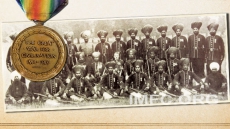Listening is a conscious choice that you make and requires continual effort to pursue.
In a world bombarded with technological distractions and an ongoing influx of media, true listening can be more challenging than you may think. Hearing others speak is a biological reaction and often passive. However, listening is an active process, requiring active participation and involvement. Listening is a conscious choice that you make and requires continual effort to pursue.
Like any other healthy habit, listening requires an investment of time. The benefits you reap not only impact you individually by making you more self-reflective, but also aid in becoming a better student or professional, alongside enhancing your relationships. The power of listening can save one from misunderstandings and repair social issues. Even in the workplace, listening allows an organization to effectively function and improves cross-functional interactions.
In the process of communication, listening is the most frequent activity and we theoretically spend a large amount of our day indulged in listening.
Given its heavy prevalence, here are five tips to become a better listener:
Have an open mind. Listening begins much before words have been exchanged. If you go in with assumptions, it will be difficult to truly understand the perspective or point being made. A blank slate and clear channel of thought allow for one to properly soak in what is being said. You should also consider that other people’s opinions about the topic and person be put aside.

Listen with more than the ears
Body language and tone are two important complements to listening. Words are merely the content, but physical behaviour and tonality add the context. Listening to the way something is being said is an advantage over other less richer forms of communication, such as texting.
Listen with the intend to understand, not reply. Especially when involved in a debate or discussion on controversial topics, you may often find yourself beginning to prep a response to what the other person is saying. When this happens, you automatically pay less attention to what is being said and start to focus on crafting the perfect answer. Refrain from bringing in your own agenda to the communication
Give feedback
Listening is a dynamic process. Good listening – when not in a one-to-many format – requires participation. This may be in the form of auditory cues to showcase that the listener is fully involved in the conversation or visual signs such as nodding. Avoid forms of distraction that may become an obstacle or portray that you are not an engaged listener. Constantly checking your phone, yawning, looking around/ not maintaining eye contact, and changing topics are actions that depict negative listening habits.

Ask the right questions and confirm
In appropriate situations, asking questions is a good technique to gain insight if there are doubts or probing with follow up questions to peak interest. Asking for clarification is not necessarily a sign that you are not a good listener. Rather, it means that you genuinely care about the conversation. It is always a good idea to confirm understanding by rephrasing a point as long as the speaker is not being interrupted.
Overall, listening is a powerful tool and often results in a win-win situation for both parties. If you listen attentively and uncover otherwise hidden needs, you are in a position of more power when it comes to persuasive interactions such as negotiating. Unlike talking, where you are transmitting information you already contain within yourself, listening is the process of learning something new. Many times, listening can be transformational as we are exposed to new points of view when coming from a non-judgmental, non-defensive space. The next time you listen, try to be a proactive listener and feel the difference!






